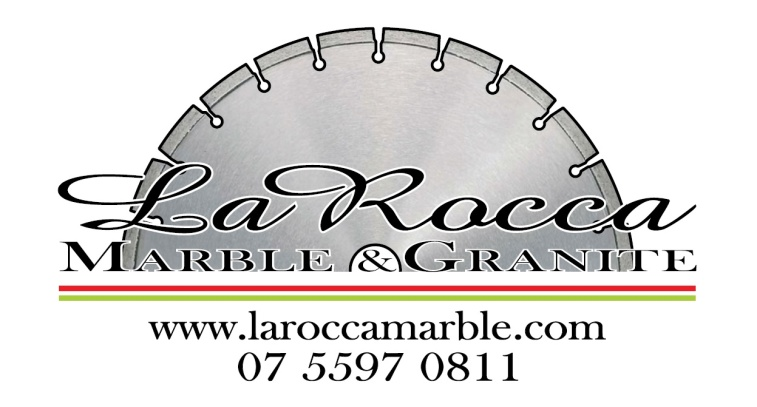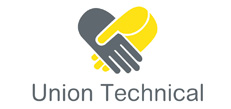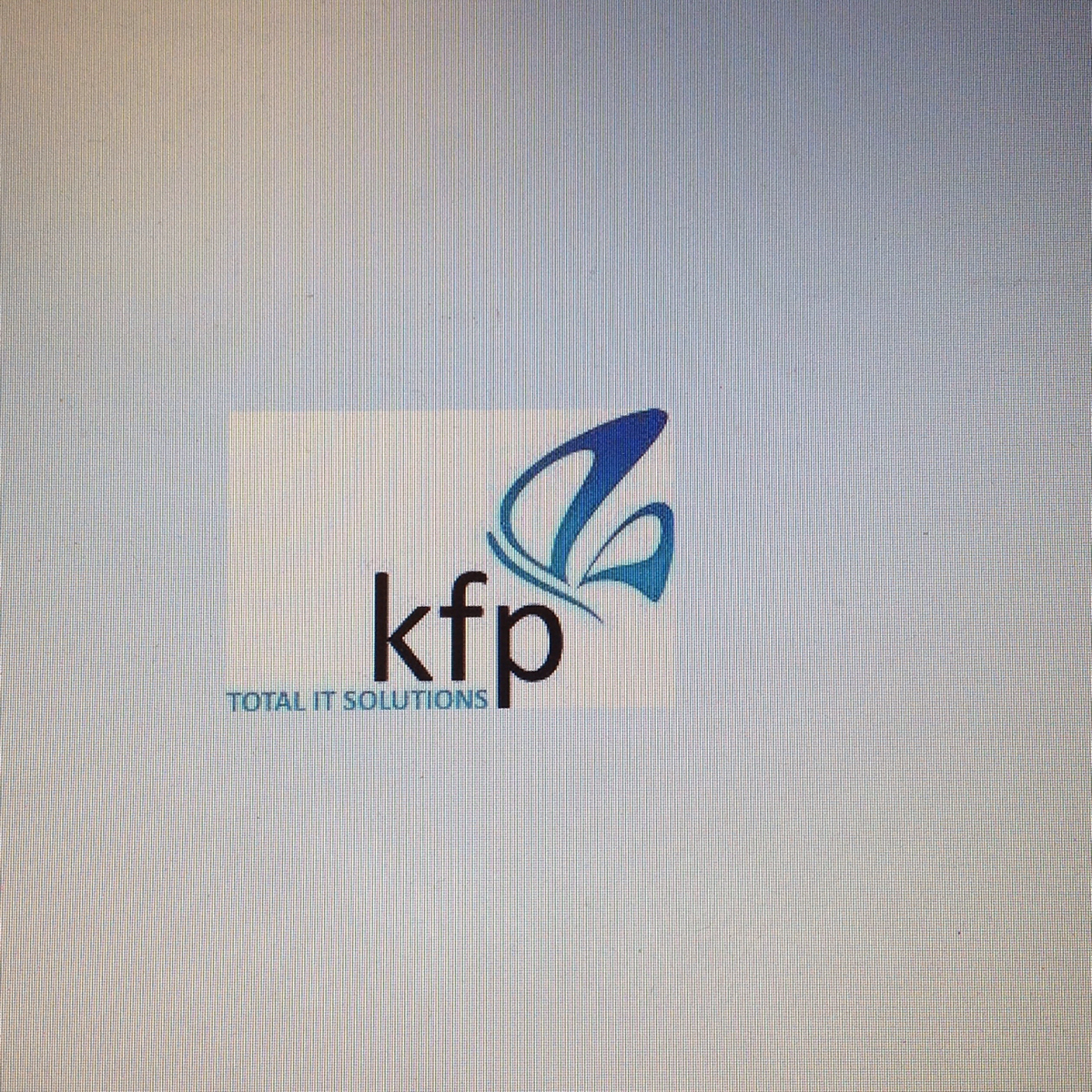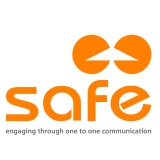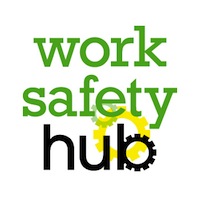Information
-
WH&S Assessment
-
WH&S Assessment number:
-
Store Name:
-
Location:
-
Conducted on
-
Completed by:
-
Store Representative:
1.0 - Work Health & Safety Policy
-
The Store should have a Workplace Health & Safety (WHS) Policy indicating their commitment to the health and safety of their employees.
-
1.1 - Does the company have a WH&S Policy?
-
1.2 - Is the senior person (PCBU) responsible for WH&S matters identified, and is this through their employment contract, their position description or the WHS Policy?
-
1.3 - Was the WH&S policy developed in consultation with employees?
-
1.4 - Do all employees know about the policy?
-
1.5 - Is the policy written in language suitable for all employees ? (e.g. other languages, plain English).
-
1.6 - Is it displayed in a prominent position in the workplace? (eg noticeboard)
-
Comments:
2.0 - Work Health & Safety Consultation
-
What method of consultation is used in the workplace?
-
2.1 - is there a formal WH&S consultation process in the workplace?
-
2.2 - Is there regular consultation?
-
2.3 - Has the consultation process been established in accordance with the WH&S Act 2011?
-
2.4 - Has adequate training been provided?
-
2.5 - Does the Health & Safety Representative (HSR) or WH&S committee participate in the development of policies and procedures that affect the health and safety of employees?
-
Comments:
3.0 - Specific Health & Safety Policies and Procedures
-
3.1 - Are there written policies and procedures addressing specific health and safety issues? (eg manual handling, hearing conservation or return to work?)
-
3.2 - Are WH&S responsibilities included in the job descriptions of all employees?
-
3.3 - Are regular workplace inspections conducted to identify hazards? Regular workplace inspections of both the workplace and work practices should be conducted.
-
3.4 - Are regular reviews of work practices being conducted?
-
3.5 - Are WH&S policies and procedures reviewed and updated where necessary? (eg when materials, methods, equipment and/or processes change)
-
3.6 - Do the policies and procedures identify when reviews will be undertaken?
-
Comment:
4.0 - Risk Management
-
4.1 - Is a risk management system in place?
-
4.2 - Does the Risk management system rank hazards into High-Medium-Low risk categories?
-
4.3 - Is there a hierarchy of controls - Eliminate.... to .....Personal protective equipment ?
-
4.4 - Are all tasks/jobs risk ranked?
-
4.5 - Are controls in place and working for all high risk tasks?
-
4.6 - Are all the employees trained in the use of Risk Assessment techniques/tools?
-
4.7 - Are the risk assessment results recorded?
-
4.8 - Are the Risk Assessment results used to produce Safe Work guides / procedures?
-
4.9 - Are there Safe Work Procedures in place and are they reviewed regularly? (12 months minimum)
-
Comments:
5.0 - First Aid Facilities and Procedures
-
5.1 - Are first aid facilities in accordance with the Safe Work Australia Code of Practice "First Aid in the workplace"?
-
5.2 - Is there a First Aid kit?
-
5.3 - Are First Aid kits checked regularly (should be checked at least once a month or after use)
-
5.4 - Are there designated staff responsible for providing first aid?
-
5.4.1 - Are they trained First Aid officers, and do they hold a current First Aid certificate from an approved provider?
-
5.5 - Are all employees aware of, and informed who the first aid offers are, and their location? (noticeboard, uniform)
-
Comment:
6.0 - Induction Procedures
-
As part of a comprehensive induction package all employees should be given an induction package that should include information about company policy and procedures and employee duties and responsibilities.
-
6.1 - Is there a structured induction procedure for all new employees?
-
6.2 - Are all new employees informed about;<br>Work Health & Safety procedures & policies, procedure for reporting an injury or near miss, legislative rights and responsibilities, representative on WH&S matters (if applicable), workplace hazards, safe use of tools, plant, equipment and substances they will encounter, the use of PPE equipment were appropriate, first aid facilities and procedures, emergency procedures?
-
6.3 - Is the induction suitable for employees from non-English speaking backgrounds?
-
6.4 - Does an appropriate person conduct the induction training?
-
Comment:
7.0 - Workplace Training
-
7.1 - Are training programs conducted on a regular basis for Managers, supervisors, employees, health & safety representatives and/or committee members?
-
7.2 - Do qualified personnel conduct workplace training?
-
7.3 - Are the training programs delivered in a way suitable for all employees (eg literacy levels, language?)
-
7.4 - Are the training programs developed in response to the needs of the employees?
-
7.5 - Are records kept on the training provided?
-
Comments:
8.0 - Accident and Near Miss Investigation
-
All injuries and near misses should be investigated to determine the cause. This will assist in the development of measures to prevent future incidents. A person should be nominated to investigate all injuries and near misses. The person should be trained in accident investigation.
-
8.1 - Does your organisation investigate all injuries, all near misses and other incidents? (eg property damage, abusive customers) ?
-
8.2 - Is there an appropriately trained person/team nominated to investigate injuries and near misses?
-
8.3 - Is there a standard written procedure for investigating all injuries and near misses?
-
8.4 - Is the injury/near miss investigated immediately after it has occurred?
-
8.5 - Is a standard report form used for investigating injuries and near misses?
-
8.6 - Does the report include; general information, description of how the incident happened, detail of the events leading up to the incident, details of damage to plant and equipment, findings from the investigation, recommended corrective action, who is responsible for actions, followup monitoring and evaluation, general comments?
-
8.7 - Are the findings discussed at staff meetings and/or WH&S committee or with the Health & Safety Representative?
-
8.8 - Do the reports go to senior management for review?
-
8.9 - Are the findings used to prevent further injuries or near misses, develop health & safety procedures, develop training programs for employees?
-
8.10 - Is implementation of recommendations monitored?
-
Comments:
9.0 - Injury recording and reporting systems
-
9.1 - Do you have a 'Register of Injuries' ?
-
9.2 - Is this readily accessible?
-
9.3 - Is someone responsible for recording injuries in the register?
-
9.4 - In the event of an injury is the following information recorded in a 'register of injuries'; name, address, age, gender, occupation of the injured person, date, time, type of injury (eg cut/sprain), body part injured (eg hand/foot), how the injury occurred, the activity at the time, use of safety processes or equipment at the time, lost time resulting from the injury, any treatment?
-
9.5 - Are the following notified in the event of an injury - The First Aid officer? management? local Workcover/Worksafe authority (if required)?
-
9.6 - In the occurrence of a near miss ("hazard") is the following information recorded - date, time, how, the activity being conducted at the time of the near miss, location, what the near miss was? (eg can toppled from top of another one and hit floor next to foot)
-
Comments:
10.0 - Noise Control
-
A workplace is unsafe and is a risk to health if any person is exposed to noise levels that: exceed an 8 hour equivalent of 85dB(A) or that peak at more than 140dB(lin) - Code of Practice - 'Managing Noise and Preventing Hearing loss at work'
-
10.1 - Have you had a noise survey conducted?
-
10.2 - Do you understand the Code of Practice Managing & preventing hearing loss at work?
-
10.3 - Do you have a noise management program?
-
10.4 - Do you consult with employees in the development of measures to reduce the level of noise?
-
10.5 - Are all employees informed of the effect of excessive noise exposure?
-
10.6 - Is appropriate Personal protective equipment supplied for all employees?
-
Comments:
11.0 Manual Handling
-
11.1 - is the company aware of the Hazardous Manual Tasks Code of Practice?
-
11.2 - Has the Manual Handling Model been implemented?
-
11.3 - Are all work tasks assessed in accordance with the model Code of Practice?
-
11.4 - Is training in Manual Handling included at induction for all employees?
-
11.5 - Does training in Manual Handling for all employees, supervisors and managers include: risk identification and assessment, control of risks, legislative requirements, safe manual handling techniques, safe use of mechanical aids?
-
11.6 - Are training programs specific to the tasks that the employes perform?
12.0 - Hazardous Chemicals
-
The Code of Practice to manage risks associated with hazardous chemicals is an approved code under Section 274 of the WH&S Act 2011 -
12.1 - Has an audit of Hazardous Chemicals in the workplace been conducted?
-
12.2 - Does the workplace have a hazardous chemicals register listing the chemicals used, produced or sold in the workplace?
-
12.3 - Have Safety Data Sheets been obtained for all Hazardous Chemicals?
-
12.4 - Are the current Safety Data Sheets readily accessible to the workers?
-
12.5 - Has a qualified person carried out a risk assessment of Hazardous Chemicals?
-
12.6 - Are all Hazardous Chemicals in the workplace stored in accordance with the information provided on the Safety Data Sheet and compatibility directions?
-
12.7 - Are measures in place to control workplace Hazardous chemicals?
-
12.8 - Is regular monitoring of Hazardous Chemicals conducted?
-
12.9 - Is the Personal Protective Equipment provided adequate and suitable, readily available and property maintained?
-
12.10 - Is training and education about Hazardous chemicals provided for all employees?
-
12.11 - Are emergency procedures in place?
-
12.12 - Is placarding present on all entrances (including HAZCHEM on entrances) if applicable?
-
12.13 - Is equipment appropriate for the Hazardous Chemicals (spark retarded forklift etc)
-
12.14 - Are spill kits on site?
-
12.14.1 - Are they appropriate to the products?
-
12.14.2 - Are personnel trained to use spill kits?
-
12.14.3 - Is there a record of this training?
-
12.14.4 - Are the spill kits in an appropriate location?
-
12.15 - Is drainage present?
-
12.16 - Is bunding present and appropriate if required?
-
12.17 - Is a smoking policy included in the dangerous goods procedure?
-
12.18 - Is ventilation required?
-
12.18.1 - Is the ventilation appropriate to the dangerous goods stored?
-
12.19 - Is there a manifest and plan locating dangerous goods available and accessible to emergency services?
-
12.20 - Are environment protection guides and segregation charts available?
-
12.21<br> - Are copies of shipping documents kept?
-
12.34 - Is the company licensed or registered with the council or local government for the storage of hazardous chemicals?
-
Comments:
13.0 - Mechanical Equipment
-
13.1 - Do all machines have safe operating instructions?
-
13.2 - Has equipment been assessed for hazards?
-
13.3 - Are dangerous moving parts on machines guarded? There are four main types of guard: fixed (preferable), interlock, photoelectric, combination.
-
13.4 - Do machine guards prevent access to all dangerous areas that are within reach of an operator or a passer-by?
-
13.5 - Is regular maintenance conducted on equipment?
-
13.6 - Are there safe work procedures for maintenance workers?
-
13.7 - Before purchasing new machinery, plant or equipment, does management consult with WH&S representative, the workers or the WH&S Committee, machine and equipment operators and maintenance staff?
-
13.8 - Is training provided for all workers that operate mechanical equipment?
-
13.9 - Is there adequate supervision of new or inexperienced workers?
-
13.10 - Are regular workplace inspections conducted on plant and equipment?
-
13.11 - Has a checklist been developed for inspection of all mechanical equipment?
-
13.12 - Are the emergency stops clearly marked and immediately accessible?
-
13.13 - Is there an isolation procedure for all equipment?
-
Comments:
14.0 - Electrical
-
14.1 - Are all electrical hand tools, equipment and leads tested by a qualified person?
-
14.2 - Are all electrical hand tools, equipment and leads tagged appropriately?
-
14.3 - Is there a procedure for visual checking before use for electrical apparatus?
-
14.4 - Is an "out of service" procedure in place for faulty equipment?
-
14.5 - Is there a regular test/inspection program in place for all leads/tools/equipment?
-
Comments:
15.0 - Lighting
-
15.1 - Is lighting in the workplace suitable for the work performed?
-
15.2 - Is lighting included as part of regular workplace inspections?
-
15.3 - Are stairwells and exits well illuminated?
-
15.4 - Are faults such as flickering globes, blown globes replaced/repaired immediately?
-
15.5 - Is glare minimised in the work area?
16.0 - Housekeeping
-
16.1 - Do all floors comply with Code of Practice "Managing the work environment and facilities?" (that is: clean, free of dust and/or dirt, uncluttered, no pot-holes and level surfaces)
-
16.2 - Are guardrails around floor openings in compliance with AS 1657?
-
16.3 - Do all fixed platforms, walkways, ladders and stairways comply with AS 1657?
-
16.4 - Do regular workplace inspections include housekeeping?
-
16.5 - Do inspection checklists include floors, aisles, windows, entrances and exits?
-
16.6 - Are there Housekeeping checklists specific to all sections/departments?
-
16.7 - Are all entrances, doorways and stairs kept clear at all times?
-
16.8 - Are work areas kept clean and tidy?
-
16.9 - Are materials and equipment stored correctly?
-
Comments:
17.0 - Airborne Substances
-
17.1 - Has a qualified individual conducted an assessment of the hazards associated with Airborne Substances?
-
17.2 - Is air monitoring done at regular intervals?
-
17.3 - Are there measures in place to control Airborne Substances?
-
17.4 - Is the ventilation system suitable for the hazards involved?
-
17.5 - Consideration should be given to: type of ventilation system (exhaust or extraction), are fumes or dust drawn away from the work area? Does clean air replace the air being drawn away? is recycled air efficiently filtered? is there monitoring of the workplace for dust/fumes?
-
17.6 - Is the ventilation regularly maintained?
-
17.7 - Are cooling towers maintained in accordance with AS/NZS3666?
-
17.8 - Is training about the hazards associated with the Airborne Substances int eh workplace provided for all employees?
-
17.9 - Is appropriate Personal Protective Equipment (PPE) provided for all employees?
-
Comments:
18.0 - Workplace Layout (Code of Practice: "Managing the Work Environment and Facilities")
18.1 Posture
-
18.1.1 - Is the work designed so that the employees don't have to repeatedly work in an awkward position that requires them to twist their trunk or neck, or raise their arms above their shoulder?
-
18.1.2 - Are frequently used tools and controls within easy reach?
-
18.1.3 - Are highly repetitive movements limited?
Sitting
-
18.2.1 - Are the seats provided comfortable?
-
18.2.2 - Are seats adjustable and adjusted to the person using them?
-
18.2.3 - When seated, are the workers legs positioned correctly?
-
18.2.4 - Are the seats easy to get in and out of?
-
18.2.5 - Does the seat have lumbar support?
18.3 Standing
-
18.3.1 - Is a footrest available? A footrest can reduce stress on the lower back and the musculoskeletal system
-
18.3.2 - Is the floor surface appropriate? Cushioned flooring should be provided for workers required to stand to do their work.
-
18.3.3 - Can the worker alternate between sitting and standing to do their job?
18.4 Work Surface Heights
-
18.4.1 - Are work heights suitable for the task?
-
18.4.2 - Are work heights adjustable?
18.5 Work Pauses
-
Rest breaks should be provided when a job requires a sustained period of repetitive or static work and there is no provision for job rotation or task variation.
-
18.5.1 - Are there adequate rest breaks provided?
18.6 Visual Requirements
-
18.6.1 - Is the lighting satisfactory for the work performed?
-
18.6.2 - Are the controls/displays panels/screens easily read from the working position?
18.7 Work Organisation
-
18.7.1 - Is there a period of adjustment for new employees or employees returning to work?
Work Rates
-
18.8.1 - Work rates should be set realistically and not based on the machine capability. Does the worker have control over the work rate?
-
18.8.2 - Is the work rate reasonably constant?
18.9 Job Design
-
Task variation should include a mixture of repetitive and non-repetitive work; this will allow for a period of recovery and help to reduce the effects of fatigue.
-
18.9.1 - Do employees have a variety of tasks in their jobs?
-
18.9.2 - Is there job rotation away from competitive work?
19.0 - Personal Protective Equipment (PPE)
-
All personnel required to wear PPE must be trained in the correct fitting, use, maintenance, storage and cleaning of PPE.
-
19.1 - Has the need for PPE been clearly identified?
-
19.2 - Are all area's identified as Hazardous and where PPE is required clearly sign posted?
-
19.3 - Is the PPE appropriate for each hazard?
-
19.4 - Does the PPE comply with the relevant Australian Standard?
-
19.5 - Is the PPE appropriate for each worker (ie fit each worker)?
-
19.6 - Are the employees and supervisors trained in the correct use of PPE?
-
19.7 - Is PPE easily accessible to workers who are required to use it?
-
19.8 - Is PPE adequately maintained?
-
19.9 - Is PPE available for visitors?
20.0 - Fire
-
20.1 - Are extinguishers in place? <br>Where practicable, extinguishers shall be located along normal paths of travel and near exits. Their location clearly indicated by placement of a location sigh, clearly visible from a distance up to 20m in all directions of approach.<br>
-
20.2 - Are extinguishers clearly marked for type of fire?
-
20.3 - Are there sufficient extinguishers in the workplace to meet the requirement of AS2444?
-
20.4 - Have the extinguishers been recently serviced (within the last six months)?
-
20.5 - Are there adequate direction notices to fire exits?
-
20.6 - Do exit doors easily open from inside?
-
20.7 - Are the exits clear of obstruction and fire extinguishers?
-
20.8 - Is the fire alarm equipment functioning correctly?
-
20.9 - Is the Evacuation Plan on display and available to all employees?
-
20.10 - Are all employees informed who the Fire Wardens are (noticeboard? Induction?)
-
20.11 - Are regular fire drills carried out?
-
20.12 - Is a fire "occurrence book" maintained?
21.0 - Hot or Cold Environments
-
21.1 - Are there written policies and procedures addressing hot and cold environments?
-
21.2 - Is training conducted for Hot or Cold environments?
-
21.3 - Do qualified personnel conduct the training?
-
21.4 - Is the training delivered in a way suitable for all employees (eg literacy levels, language) ?
-
21.5 - Are records kept of the training provided?
-
21.6 - Is suitable PPE provided?
22.0 - Confined Spaces
-
22.1 - Are confined space areas identified and sign posted?
-
22.2 - Is there a Safe System of Work for all confined spaces?
-
22.3 - Are employees trained in testing procedures for confined Space environments?
-
22.4 - Is there a regular maintenance/calibration system in place for environment testing meters?
-
22.5 - Is maintenance and recalibration of testing meters done by an authorised/licensed person?
-
22.6 - Are employes fully trained in areas such as correct use of PPE, actions to take to respond to alarms, use and testing of SCABA (self contained breathing apparatus), recovery tools or equipment use to rescue trapped persons, emergency life support techniques, site emergency communication systems, isolation of potentially hazardous services?
14.0 - Vehicle Condition
-
23.1 - Is scheduled maintenance performed?
-
23.2 - Is the condition of the tyres within required standard?
-
23.3 - Do brakes work correctly?
-
23.4 - Are all lights working (check reversing/headlights/indicators)
-
23.5 - Condition of seats?
-
23.6 - Is the vehicle fully registered?
-
23.7 - Is there a current First aid kit in the vehicle?
-
23.8 - Is there a spill kit in the vehicle?
Sign Off
-
On Site Representative - acknowledgement that this person has participated in this audit
-
Franchise Business Manager






